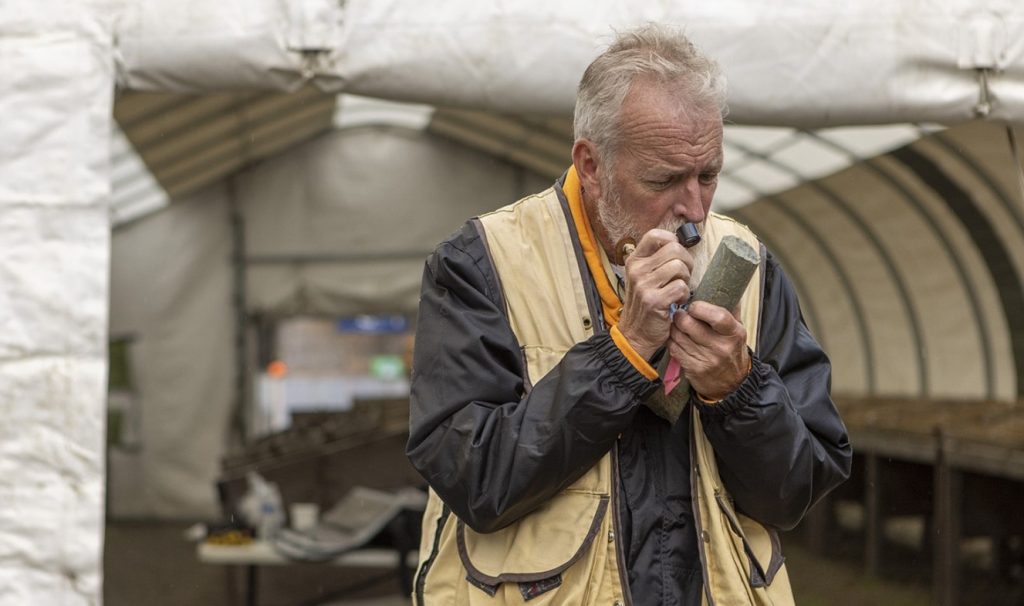American Pacific Mining drills 1.42% copper over 33.3 metres at Palmer, Alaska

American Pacific Mining Corp. [CSE-USGD; OTCQX-USGDF; FWB-1QC] reported initial assay results that continue to highlight the copper-zinc-rich nature of mineralization at the Palmer project. Palmer is an advanced-stage, high-grade volcanogenic massive sulphide-sulphate deposit (VMS) located in the Porcupine mining district of the Haines borough, Alaska, United States. Constantine North Inc., a subsidiary of American Pacific, is the operator for the project and the US$25.5-million 2023 program has been financed by joint venture (JV) partner Dowa Metals & Mining Co. Ltd.
The company has received complete assay results for seven of the 23 drill holes completed as part of the 2023 resource definition drilling at the Southwall zones of the Palmer deposit.
Highlights: CMR23-153 (upper zone 1) intersected 23.4 metres of 1.78% copper (Cu) and 13.73% zinc (Zn) with elevated gold, silver and barite values, including 30.16% Zn over 6.2 metres.
CMR23-152 (upper zone 1) intersected 14.8 metres of 1.26% Cu and 7.68% Zn, including up to 7.48% Cu over 1.1 metres.
Zone 1 infill assay results to date have exceeded expectations with higher grades and mineralized thickness than currently modelled in the eastern portion of the deposit.
CMR23-157-01 (lower zone 2-3) intersected 22.9 metres of 2.18% Cu, including 4.23% Cu over 5.3 metres, demonstrating the potential for significant copper grades and thickness.
Assay results from these initial infill diamond drill holes are encouraging and support the mineral resource definition in the Southwall.
“The 2023 resource definition and geotechnical drilling programs at our Palmer project have been successfully completed,” stated Warwick Smith, CEO. “We are pleased that significant semi-massive and massive sulphide mineralization has been observed within the upper (Zone 1) and lower (Zone 2-3) VMS lenses of the Southwall Zone at the Palmer deposit. Initial assay results continue to highlight the copper-zinc-rich nature of the Palmer deposit and we look forward to receiving and reporting additional assay results in the coming weeks.”
Since drills began turning June 10, a total of 10,622.2 metres have been drilled, representing 87% of the planned infill program and 93% of the planned geotechnical program. With the additional season end exploration program at regional targets, Christmas/Red Creek, 91% of the overall program was achieved. The 2023 diamond drill program targeted high-priority areas in two unique mineralized lenses in the Southwall Zone. Two diamond drill rigs were dedicated to the infill drill program with a third diamond drill rig focused on hydro-geotechnical drilling around the immediate deposit area.
The initial 2023 results build the JV partners’ confidence in the geologic interpretation of the VMS lenses within the Southwall Zone, while gaining valuable geotechnical data of the surrounding wall rock. The insights gained from this program will guide subsequent drilling campaigns to support future feasibility-level studies of the Palmer deposit and discovery-focused drilling throughout the region.
Southwall Zone 1 (upper): Assay results for four drill holes have been received. Initial assay results indicate a zinc-barite rich eastern side to Zone 1 with a transition to more copper-rich mineralization in the center of the lens. Current assays in the eastern portion indicate a thickening of the modeled Zone 1 lens with zinc grades over varying lengths.
Southwall Zone 2-3 (lower): Assay results for the first three drill holes have been received. Drill holes CMR23-151 and CMR23-154 targeted a gap in the current block model, where copper-zinc stringer mineralization was intersected in addition to valuable structural data. CMR23-157-01 was a planned directional drill hole that intersected significant copper-rich mineralization within two distinct massive sulphide lenses separated by mineralized massive barite and capped by mineralized barite and chert.
Gooseberry Project Update: The company completed 10 of 29 proposed drill holes this summer to begin testing regional “wildcat” exploration targets in the pursuit of discovering additional veins across the 100%-owned Gooseberry Project. GB23-002 intersected a 19.8 metres interval of lower grade calcite-quartz veining with the final 4.6 metres of the hole returning undetectable gold and silver values. The program was terminated early due to drilling / ground condition challenges.
American Pacific Mining has two flagship assets: the Palmer Project, a Volcanic Massive Sulfide (VMS) project in Alaska, under joint-venture partnership with Dowa Metals & Mining, owner of Japan’s largest zinc smelter; and the Madison Project, a past-producing copper-gold project in Montana partnered with Kennecott Exploration, a division of the Rio Tinto Group.
Also, in American Pacific’s asset portfolio are three high-grade, precious metals projects located in key mining districts of Nevada, USA: the Ziggurat Gold project, partnered with Centerra Gold; the Gooseberry Silver-Gold project; and the Tuscarora Gold-Silver project.
